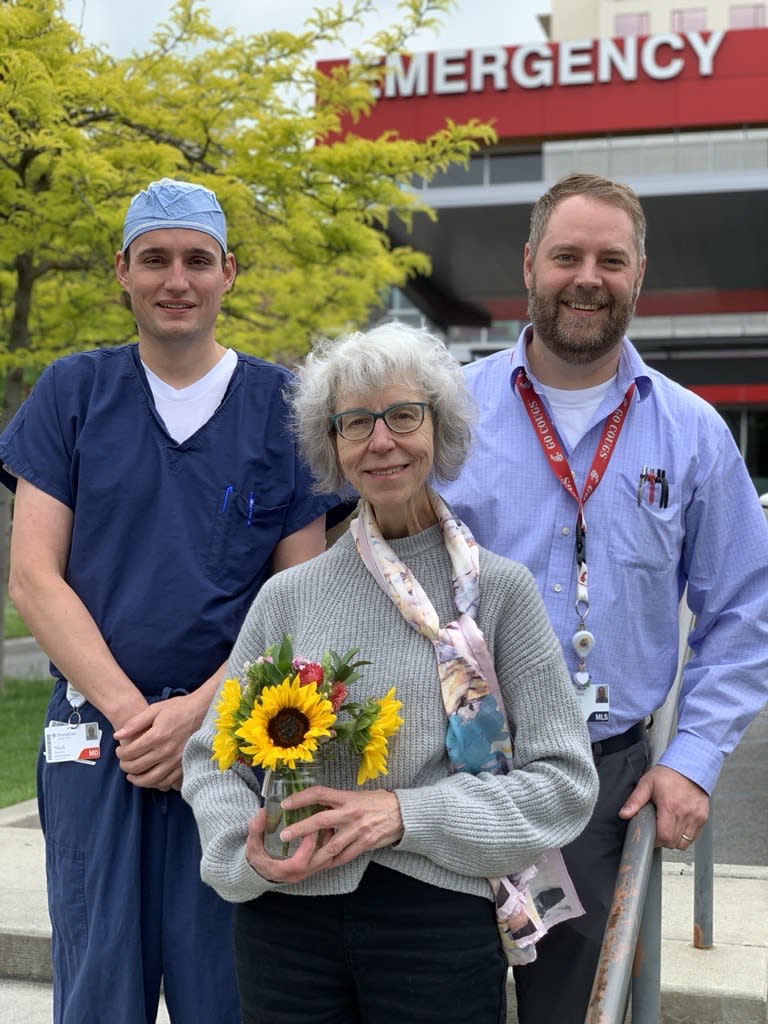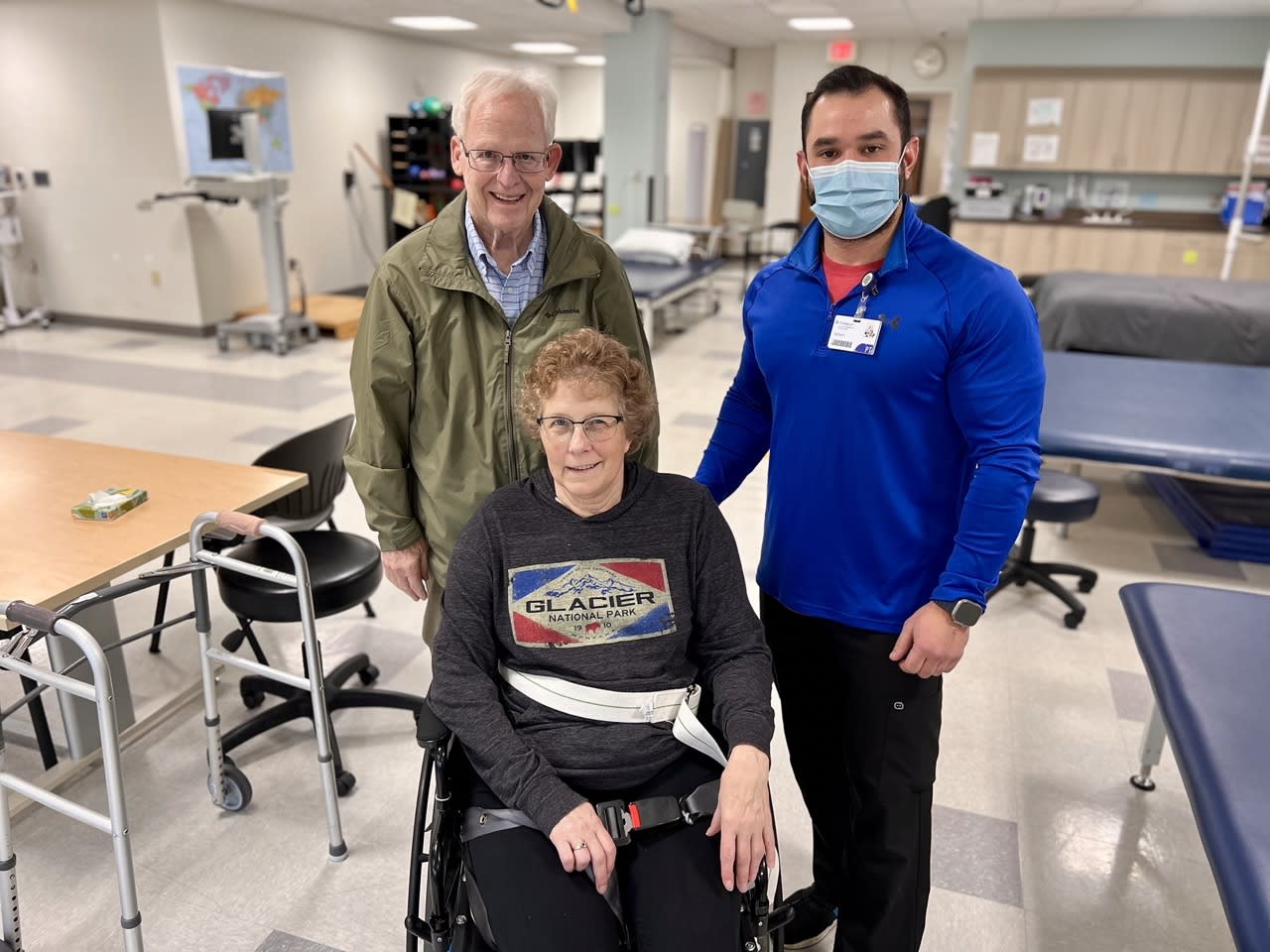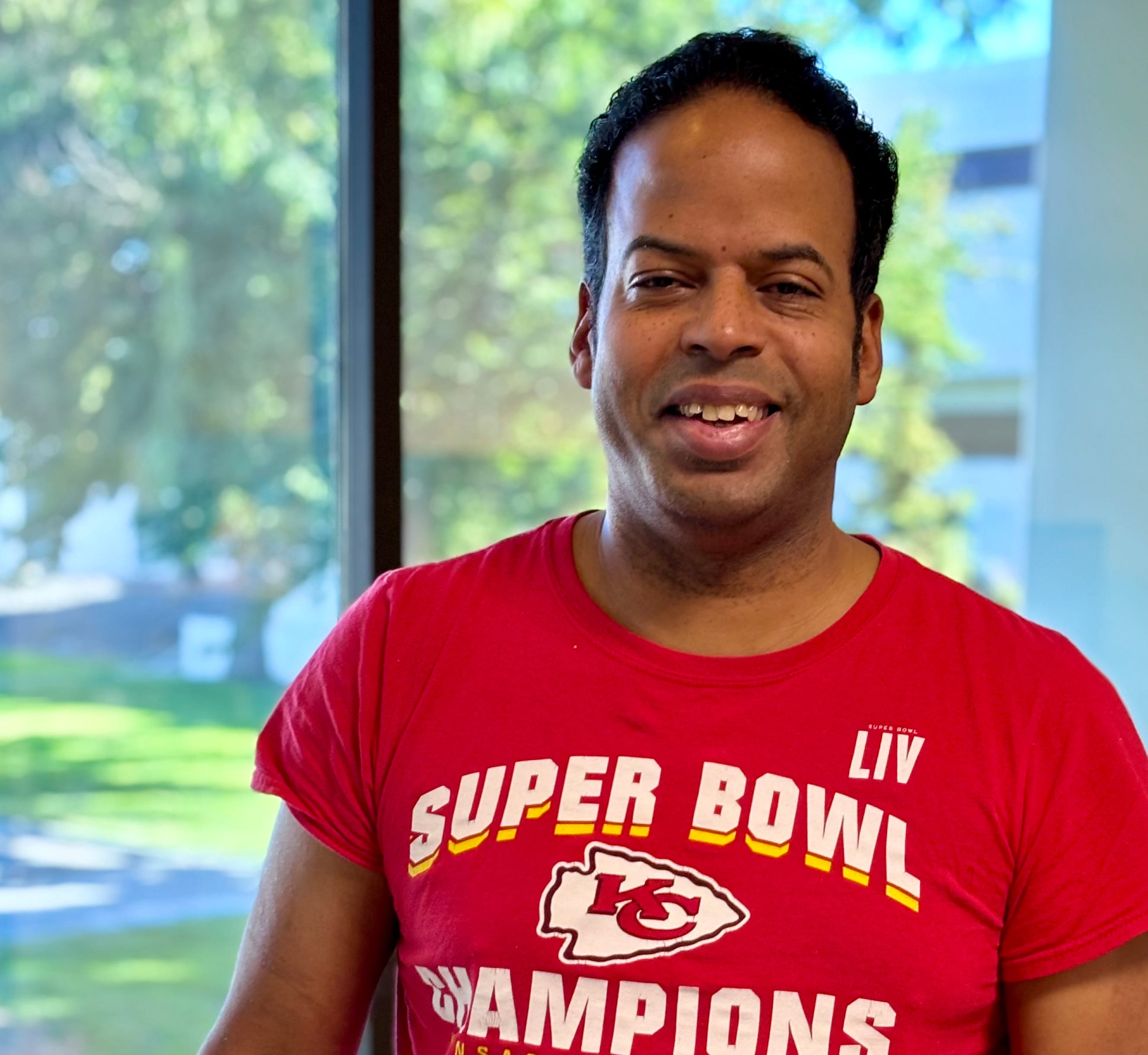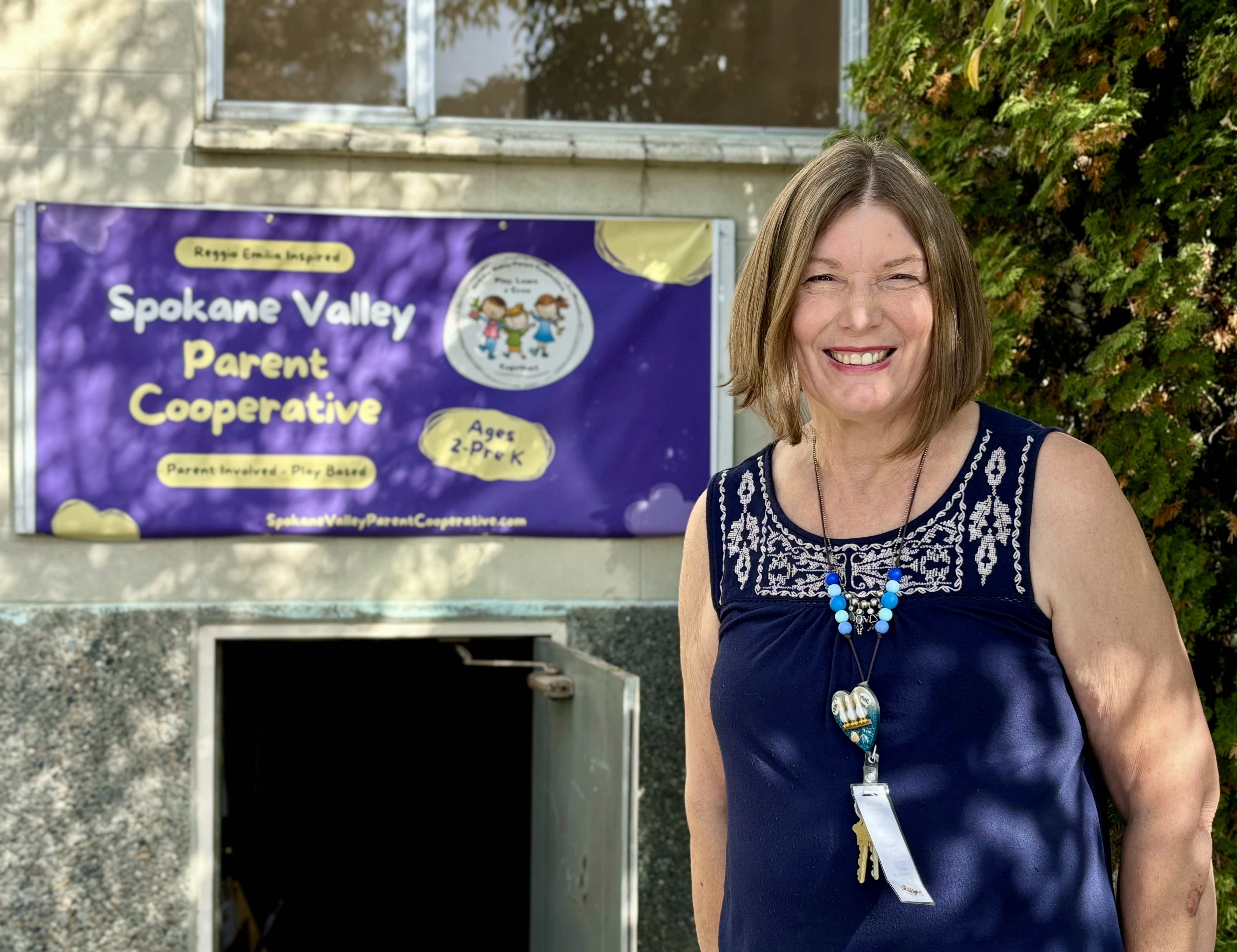Providence caregivers save fellow caregiver experiencing a stroke

Stroke Awareness Month is commemorated every May to share the importance of knowing early detection, prevention, treatment, and awareness of stroke. For one of our Providence caregivers, being around a team of people who knew the signs and symptoms of stroke was a lifesaving experience.
On October 20, 2023, Mary Terhaar, a former medical laboratory scientist at Providence Sacred Heart Medical Center, survived a stroke at work. Terhaar’s day began as any other day. She arrived at work, clocked in, changed into her scrubs, and opened the laboratory in cardiovascular surgery center. Unexpectedly, her day took a turn. Mark Kirchmeier, a perfusionist in the cardiovascular surgery center, noticed her behavior was drastically different from her usual self. This prompted Kirchmeier to notify his colleagues, including Dr. Mark Ramirez, an anesthesiologist.
"Talking to Mary initially, she looked normal,” Dr. Ramirez recalled. “I didn’t see the obvious facial droop or anything like that. The only thing I did notice was that she was talking in circles and not making a lot of sense. We took her mask off and noticed she was drooling off to the side, which made me a bit concerned."
Unaware she was experiencing a stroke, Terhaar wanted to resume her day at work. Fortunately, Dr. Ramirez had the knowledge and quick thinking to take her vital signs and convinced her to go to the emergency department (ED) for a full assessment. Her condition progressed rapidly, leading the ED team to call a code stroke.
“You don’t know when you are having that kind of stroke, there’s no pain,” Terhaar said. “I thought I was fine.”
Brad Rumsey is the clinical supervisor for the laboratory at PSHMC. He was working in another laboratory on a different floor at the time Terhaar had the stroke but was kept in the loop by the team. He knew Terhaar was with people who cared about her. He met Terhaar in the ED and acknowledged the outstanding work of the team, including the ED, anesthesiologists, perfusionists, nurses, and support staff.
“It couldn’t have happened in a better place,” Rumsey said. “We have such a great team, and the outcome was good. I had a lot of trust in the hands she was in.”
Terhaar is beloved across all departments in the lab, having worked there for over 45 years. There was an outpouring of love and support for her.
“I deeply appreciate my colleagues' persistence in ensuring that I receive prompt treatment,” Terhaar said.
After her initial care, Terhaar was moved to the Providence Sacred Heart Medical Center intensive care unit (ICU), then to the neurology floor. She then transferred to Providence St. Luke’s Rehabilitation Medical Center where she received therapy for 10 days to get her back on her feet. She praised the seamless transition to St. Luke’s, highlighting the continuity of care she received.
“There was no better place Mary could have been to receive treatment,” Dr. Ramirez said. “I am glad Mary is doing well and I am incredibly grateful for the emergency department. It is great to have awareness, not only in the community but also inside the hospital.”
Terhaar is now retired and excited to experience the journey that lies ahead.
Her story highlights the importance of stroke awareness and the role that quick, knowledgeable responses play in saving lives. The prompt actions of her colleagues, combined with the comprehensive care at Providence, were vital to save her life.
B.E. F.A.S.T.: Recognizing the signs of a stroke
Balance: Is the person suddenly having trouble with balance or coordination?
Eyes: Is the person experiencing sudden blurred or double vision, or a loss of vision in one or both eyes?
Face: Ask the person to smile. Does one side of the face droop?
Arms: Ask the person to raise both arms. Does one arm drift downward?
Speech: Ask the person to repeat a simple phrase. Is their speech slurred or strange?
Time: If you observe any of these signs, it’s time to call emergency services immediately.



